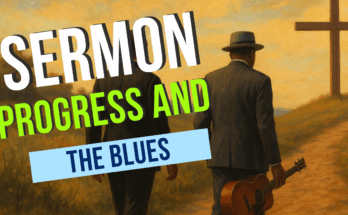As an Amazon Associate I earn from qualifying purchases.
 Have you ever really analyzed your illustrations? I suspect most preachers don’t. I did it one time and found that the vast majority of my illustrations were largely about men. They were mostly american stories. The ethnicity of the people were mostly either African American or not stated. They were largely about middle class people and their struggles…etc
Have you ever really analyzed your illustrations? I suspect most preachers don’t. I did it one time and found that the vast majority of my illustrations were largely about men. They were mostly american stories. The ethnicity of the people were mostly either African American or not stated. They were largely about middle class people and their struggles…etc
Now when you look at who I preach to, does it correlate? Well some pieces do and some pieces do not. Now don’t get me wrong, a good story will transcend ethnicity, gender, age, and these other things and cause us to think about our humanity in relationship to the divine.
While that is true, there are still some in our congregation that will hear better and learn better when the sermons more directly address them. Plus there is a fundamental question of fairness. Now I am not suggesting that you see the percentage of women in your congregation and then make sure to have such a representation in your illustrations. But what I am suggesting is that you think deeply about how your illustration chioces affect your congregation’s hearing of your sermons.
So ask yourself, who is the hero in your stories? Are they always the man? Are they always a woman? Are they often Black? Are they often White? Are they often some other ethnicity? How about age? Do you always have the hero as the young one? The old one? These questions can help us really dig into who we are, but they also help us understand what we are teaching on a deeper level, perhaps even deeper than our conscious thoughts.
On a practical level, what illustrations you choose can alter the theme slightly and make it accessible to a different group. For example, your sermon on obeying God wherever he leads based on Abraham leaving Ur to follow the voice of God could be turned into a “new adult” sermon with illustrations about the transition from your parents home to establishing a new home.
It could be turned into a sermons suitable for retirees by using illustrations applicable to the process of leaving your daily work that meant so much to you but now is a thing of the past.
It could even be turned into a sermon suitable for children as you use illustrations on the transition the fourth grade into a new school upon entering the fifth grade.
My only point is that preachers should think about how and why they use certain illustrations and make it work for the sermon. Like my homiletic instructor used to say, “If a sermon is worth preaching once, it is worth preaching more than once.” Changing the illustrations can really breathe life into an old sermon and allow people to hear it with new ears.
Amazon and the Amazon logo are trademarks of Amazon.com, Inc, or its affiliates.





